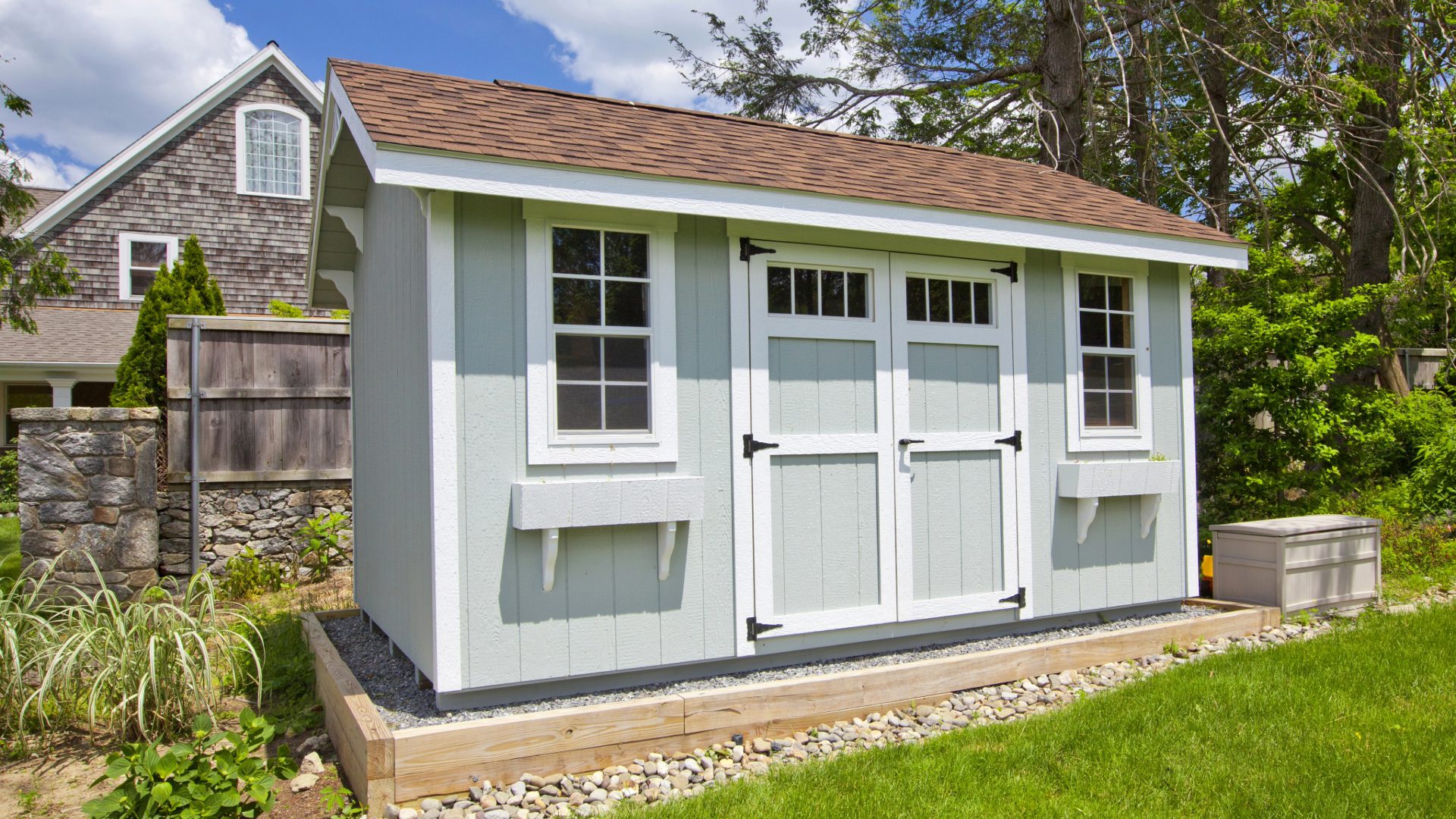🤔 Which Shed Roof Is Right for Your Project?
You’ve finally decided to build that shed you’ve been talking about for years. The plans are drawn up, the materials list is coming together, and then it hits you: what type of roof should you put on this thing?
Finding the right design for your outdoor space is a crucial decision for any shed project. If you’re standing in your backyard scratching your head while staring at an unfinished shed frame, you’re not alone. Choosing the right style can feel more complicated than assembling that “easy-to-assemble” furniture you bought last weekend.
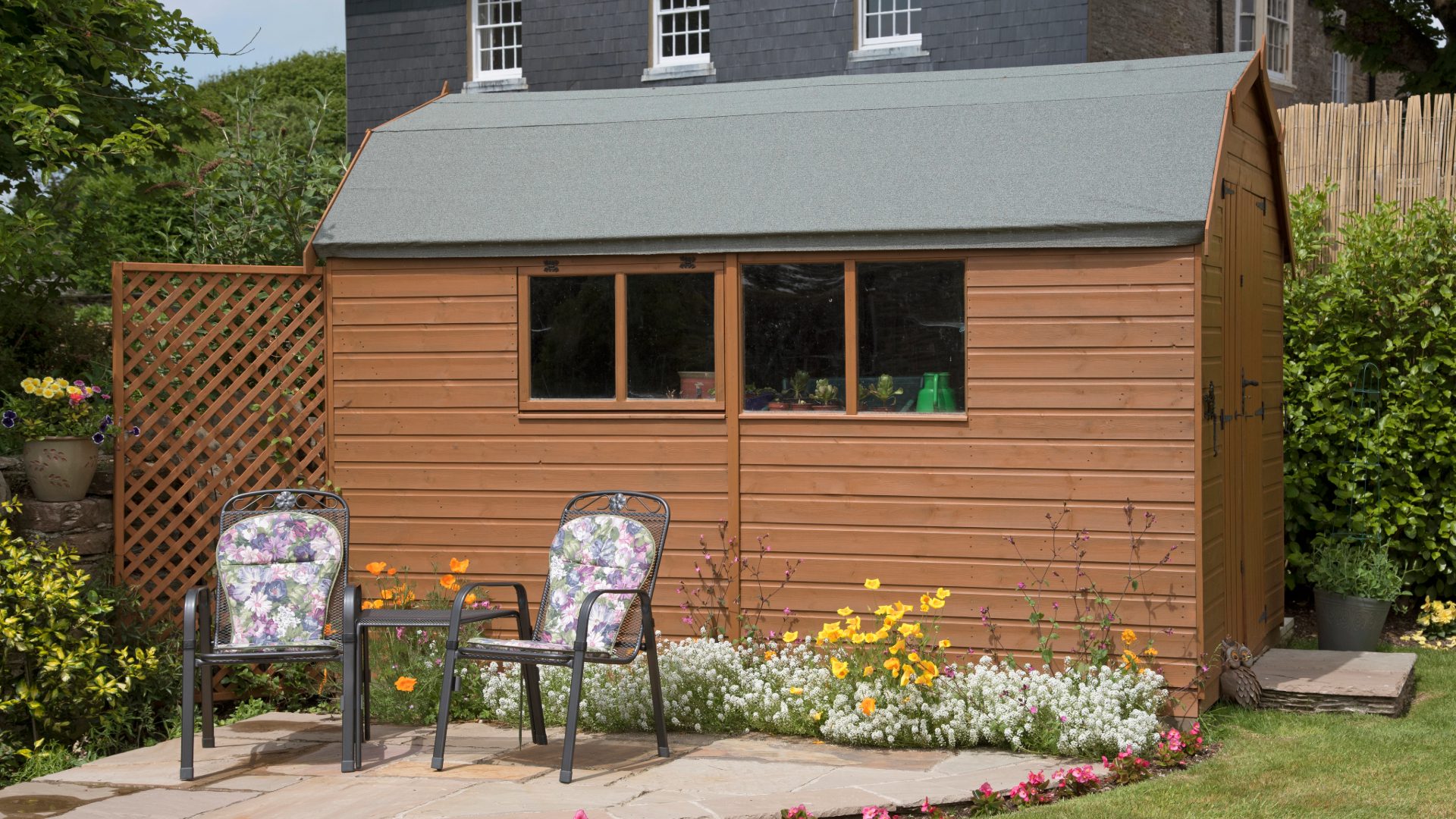
💡 Why Your Shed Roof Choice Actually Matters
Nobody builds a shed hoping it’ll collapse under the first winter snow. The design you choose affects everything from how long your storage sheds will last to how much storage space you’ll have inside.
But how do you know which of the many available options is right for your project? Is a traditional triangular design always the answer? Should you consider metal roofs over traditional shingles? And what exactly is a gambrel roof anyway?
With so many options available, making the proper choice for your specific needs is essential. Spoiler alert: there’s no one-size-fits-all answer. But by the time you finish reading this guide, you’ll know exactly which design will work best for your specific needs.
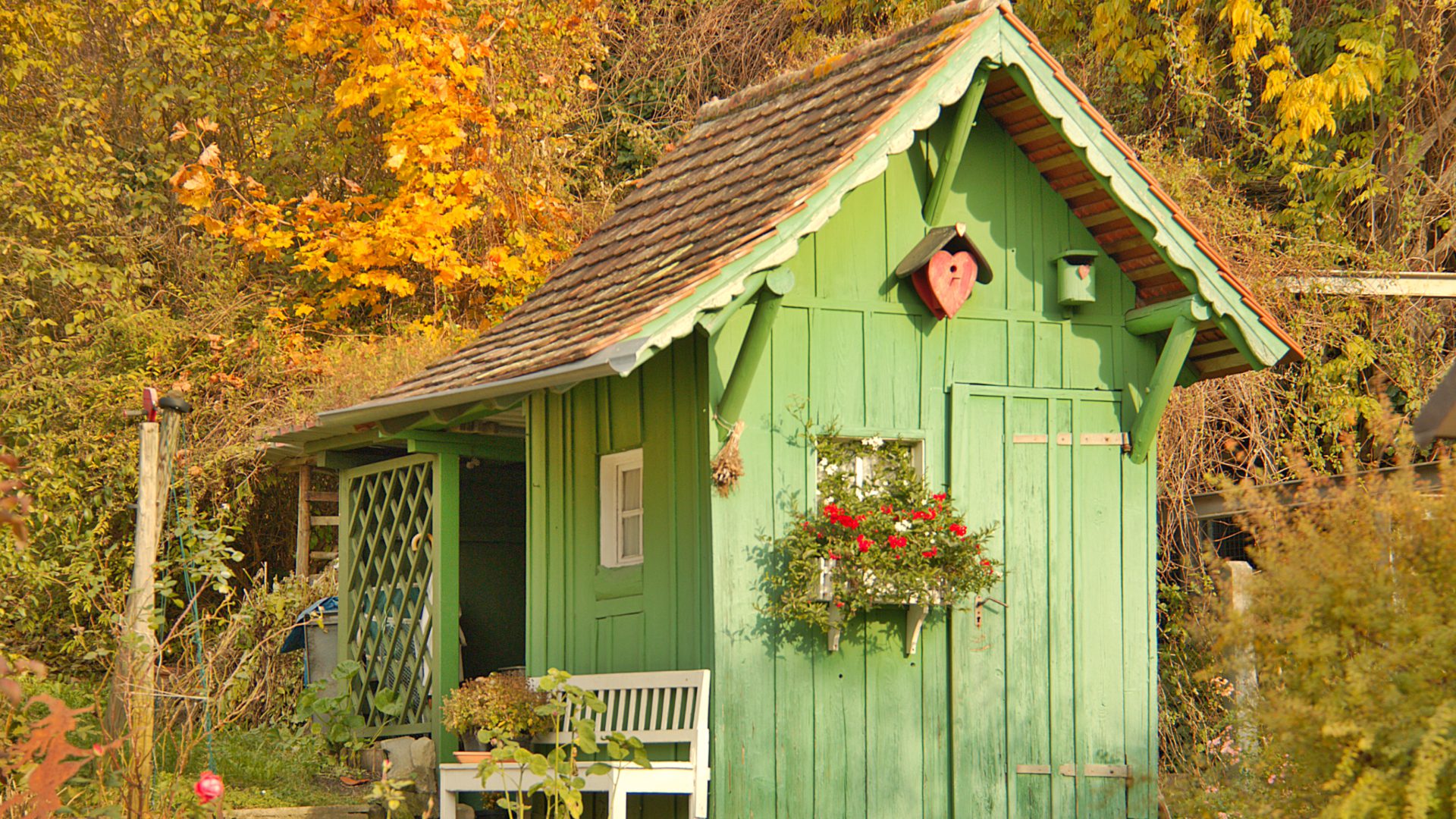
🏛️ The Classic Gable Roof: There’s a Reason It’s Everywhere
Drive through any neighborhood and count the triangular roofs. Go ahead, we’ll wait.
The classic triangular design is what probably first comes to mind when you think “roof.” There’s a reason gable roofs are so popular – they just work.
What Makes This Design a Solid Choice?
The traditional triangular design provides several practical advantages:
- Two sloping sides that meet at a central ridge
- Excellent water and snow runoff
- Creates usable attic space
- Simple design makes it DIY-friendly
- Works with virtually any roofing material
A classic gable roof gives you that traditional shed look while providing practical benefits. The steep slope means rain and snow don’t stick around, and the design creates extra storage in the peak. Many homeowners choose this triangular design for their balance of functionality and appearance.
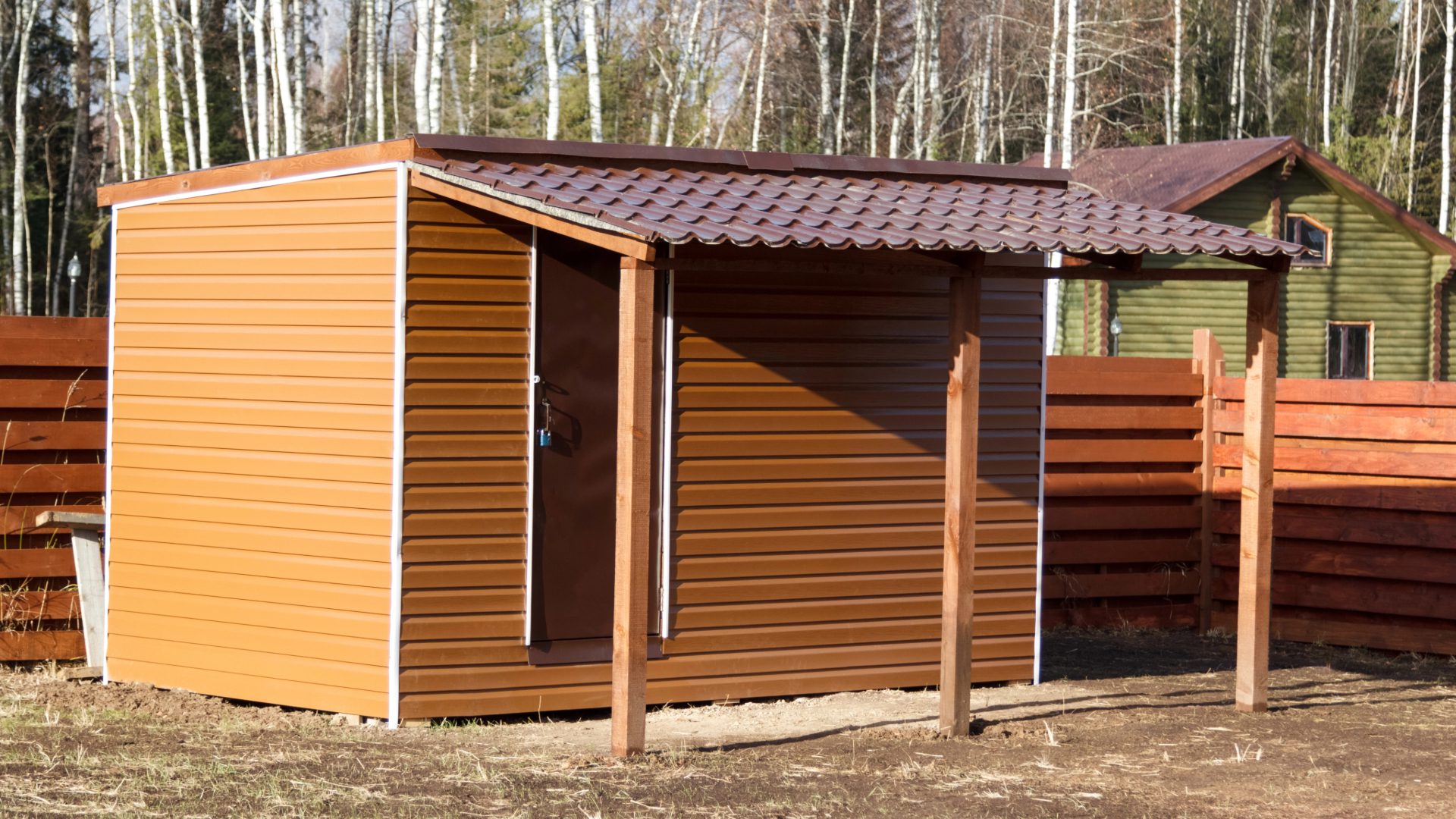
📐 Shed Roof (Skillion): Minimalism Meets Function
Despite the confusing name (yes, a “shed roof” is a specific type of roof for any building, not just sheds), this design is gaining popularity for its modern look and simplicity.
The Sleek, Single-Slope Wonder
A skillion roof (also called a shed roof design) features:
- Single sloping plane from high point to low point
- No ridges or valleys
- Clean, contemporary appearance
- Excellent for water runoff with its steep slope
- Perfect for areas with heavy rainfall
Think of it as half of a traditional triangular roof. The single-slope design creates a dramatic slant that can make even a humble storage shed look architecturally interesting. Unlike traditional triangular designs, this single sloping plane creates a distinct modern look that many find appealing for contemporary properties.
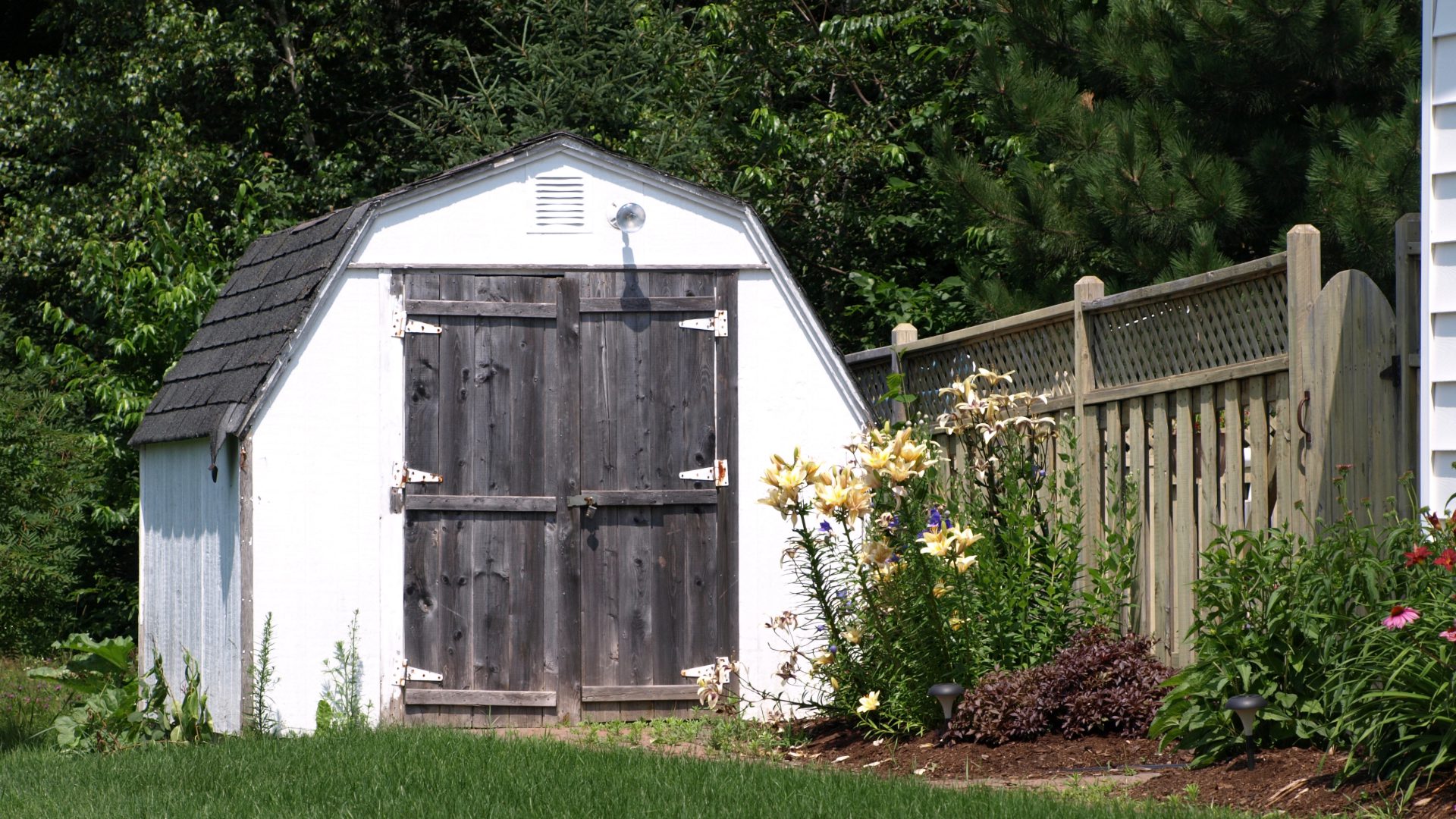
🏚️ Looking for Extra Space? The Gambrel Might Be Your Answer
When someone says “barn roof,” they’re usually talking about a gambrel roof. This distinctive design isn’t just for housing livestock – it’s perfect for maximizing storage space in your shed.
The Space-Creating Magic of Gambrel Roofs
The distinctive gambrel design provides several key benefits:
- Two slopes on each side of the roof
- The upper slope has a gentle pitch; the lower slope is steeper
- Creates significant headroom inside
- Perfect for adding a loft area for additional storage space
- Iconic barn-style appearance
If you’re building a shed for workshop purposes or need a lot of vertical storage, the gambrel design should be high on your list. When comparing different options, the gambrel design essentially gives you an extra half-story without increasing the footprint.
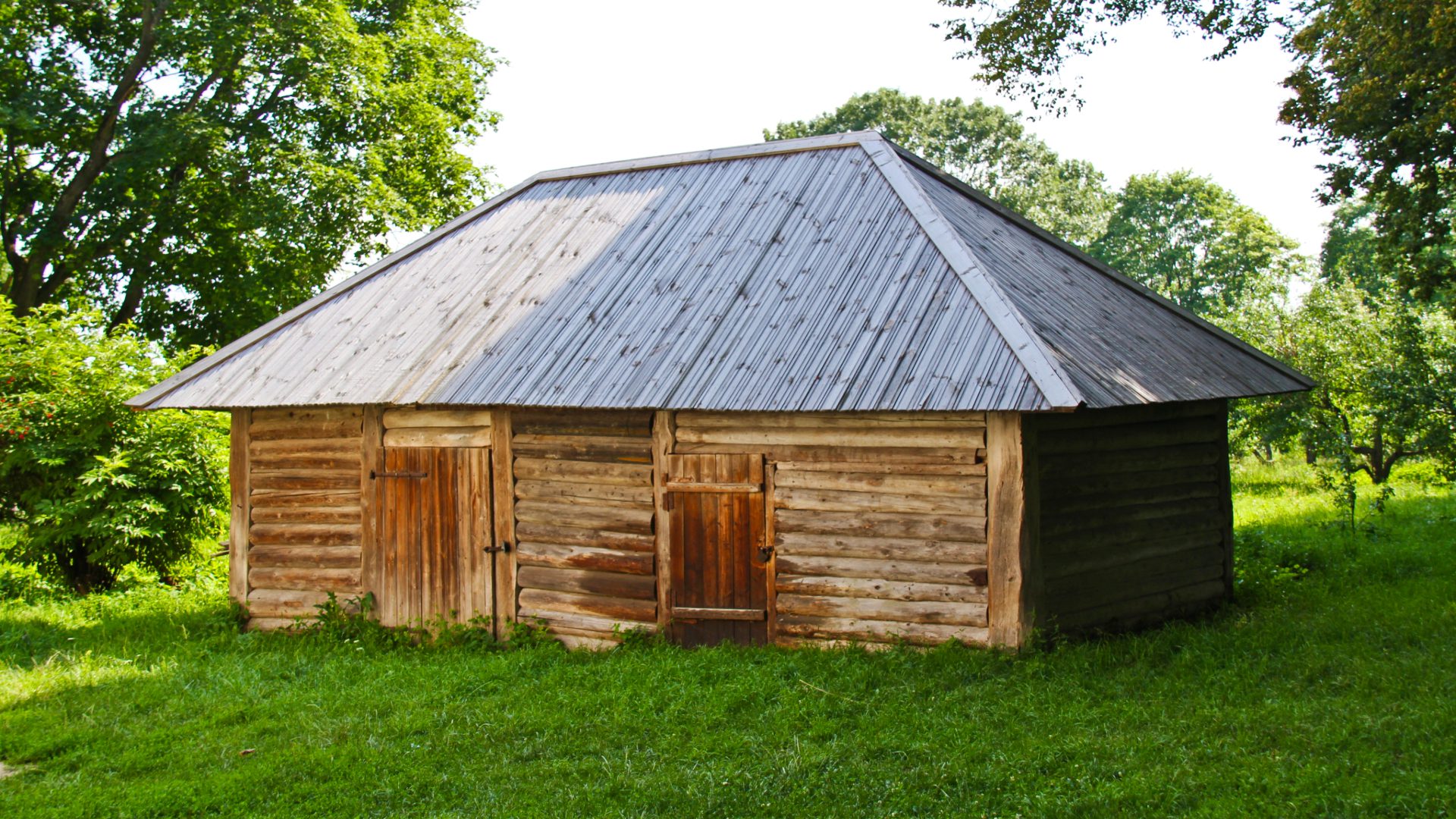
🏘️ Hip Roof: For When You Want Your Shed to Look Fancier Than Your House
A hip roof has slopes on all four sides that come together at the top. It’s the roof that makes you say, “That’s not a shed, that’s a tiny house!”
Why Consider a Hip Roof?
A hip roof offers several advantages that make it worth the extra construction effort:
- Slopes on all four sides
- Excellent stability in high winds
- Graceful, high-end appearance
- Good for any climate
- Creates a small amount of attic space
Hip roofs are more complex to build than triangular or single-slope designs, but they offer superior wind resistance. If your shed is going to be highly visible from your home or street, a hip roof gives it a finished, upscale look.
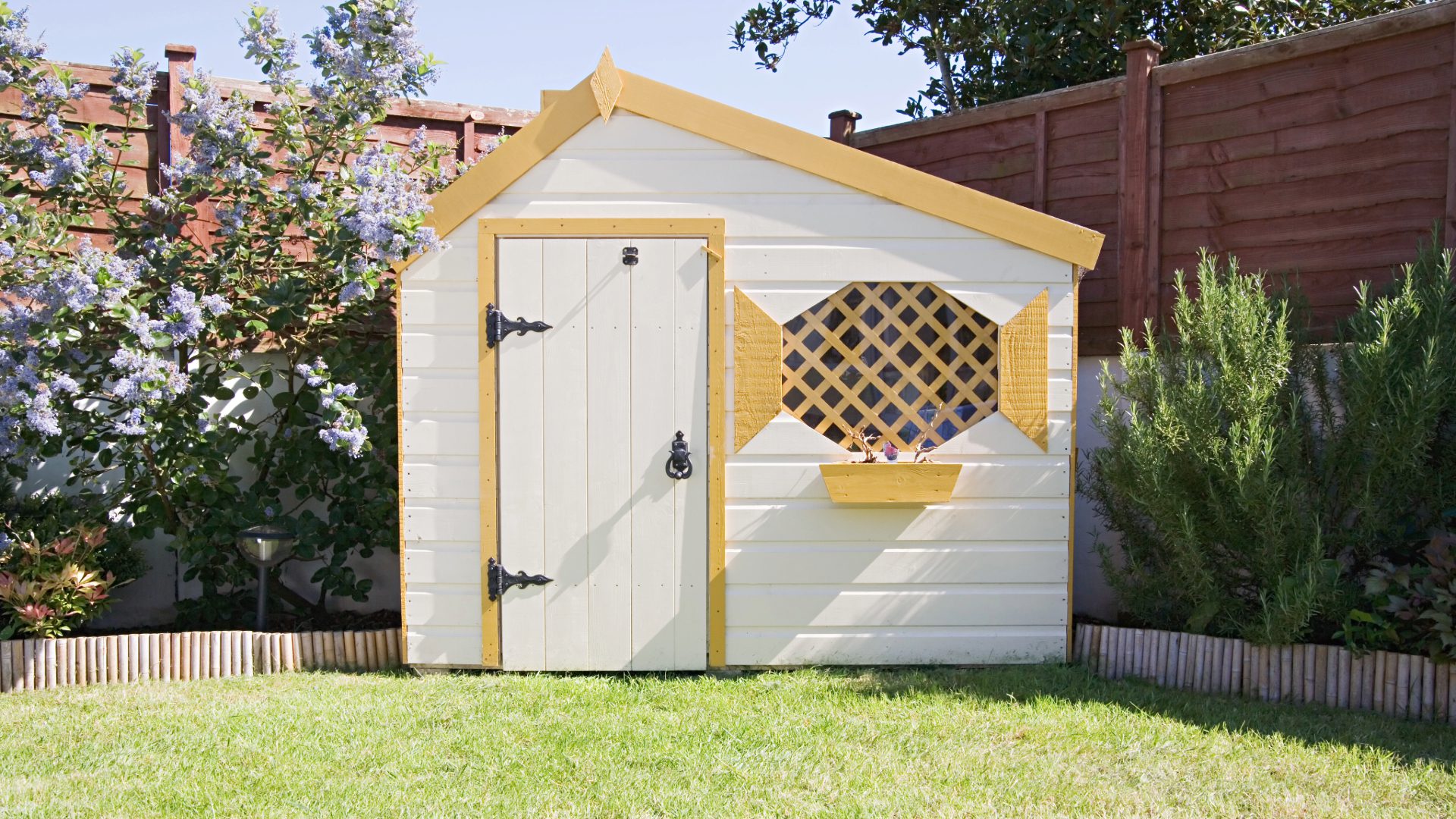
🏡 Saltbox Roof: New England Charm for Your Backyard
If you’ve ever visited historic New England, you’ve seen saltbox roofs. This asymmetrical design features a short slope on one side and a long slope on the other.
The Practical History of the Saltbox
This distinctive New England design offers both historical charm and practical benefits:
- Asymmetrical design with one long slope and one short slope
- Excellent for shedding snow and rain
- Creates varied ceiling heights inside
- Distinctive, historical appearance
- Works well when built against an existing wall
The saltbox design originated as a tax workaround (seriously! Colonial homes were taxed based on the number of stories at the front, so the sloping back roof reduced taxes while maintaining space). Today, this design adds character while providing practical benefits.
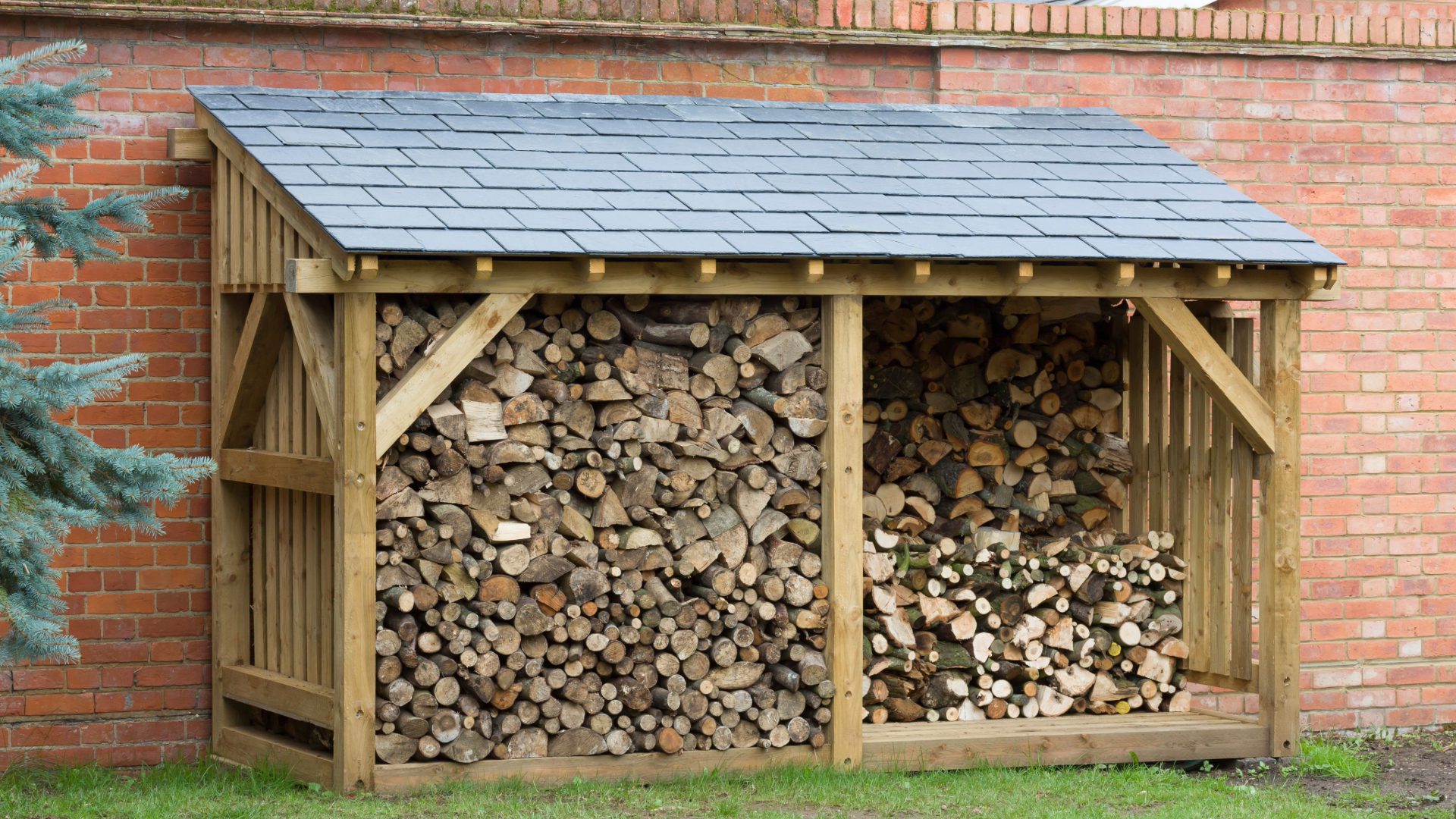
🏠 Lean-To Roof: The Ultimate Space-Saver
When space is tight or you’re attaching your shed to an existing structure, the lean-to roof is your friend. It’s essentially a single-slope design that connects to an existing wall.
Perfect for Tight Spaces
The lean-to design excels in confined areas with these advantages:
- Single slope descending from an existing wall
- The simplest design to build
- Economical use of materials
- Ideal for narrow side yards
- Great for storing long items like ladders
If you’re dealing with limited outdoor space or want to add extra storage along the side of your home or garage, a lean-to design makes the most sense. The lean-to roof attaches to an existing wall, creating an efficient use of space. It’s also the easiest option for first-time builders to tackle.
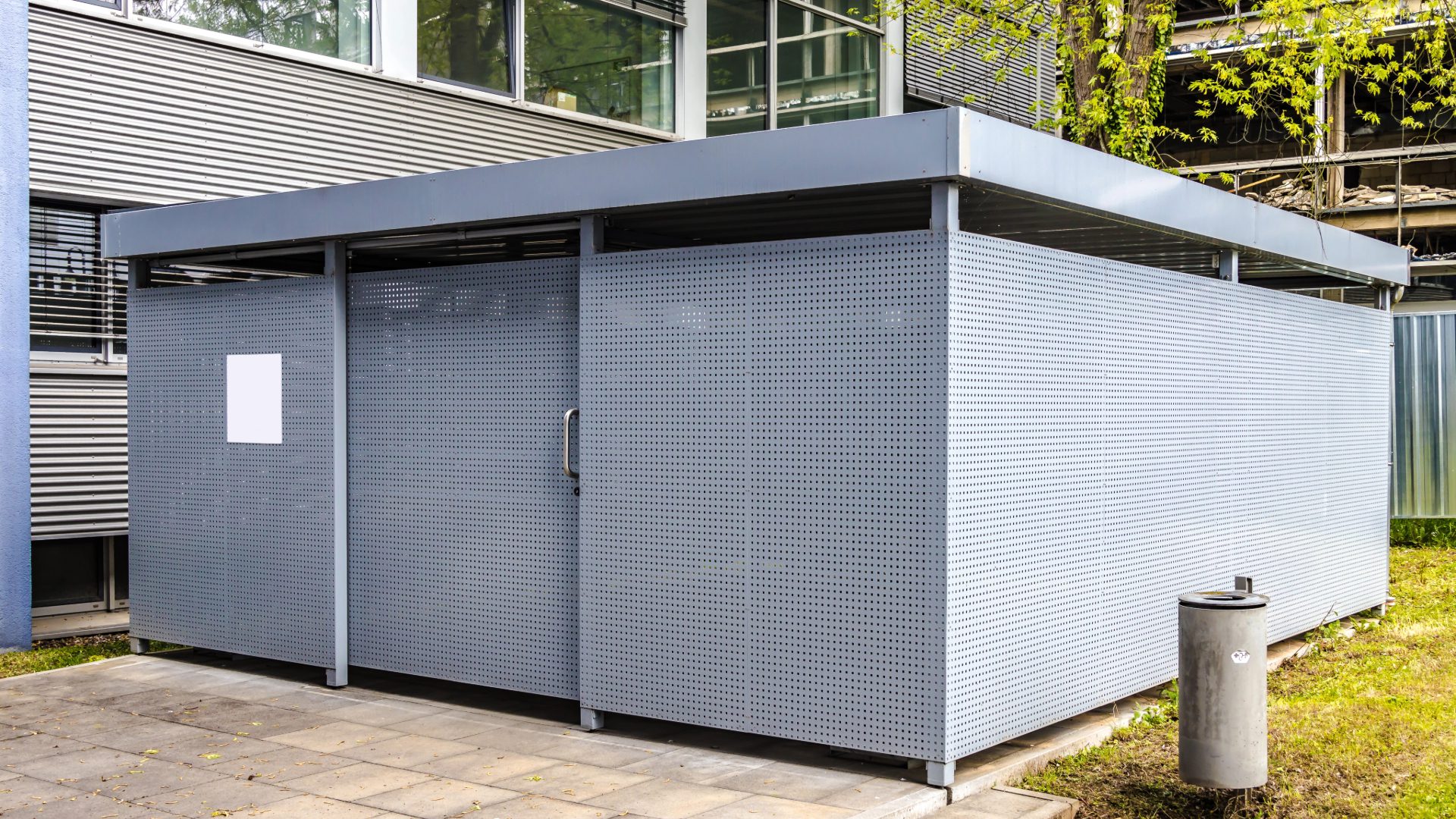
📏 Flat Roof: Not Actually Flat
Despite the name, a flat roof isn’t completely horizontal. It has a very slight pitch for water drainage, but it appears flat to the naked eye.
When a Flat Roof Makes Sense
Despite common misconceptions, flat roofs offer several compelling features:
- Minimal pitch (usually 1-2 degrees) – not a completely horizontal surface
- Modern, clean appearance
- Can create usable space on top
- Good for areas with little rainfall
- Perfect for installing solar panels or creating rooftop gardens
Flat roofs have come a long way in terms of technology and durability. Modern materials like EPDM rubber make them much more reliable than older flat roofs that were prone to leaking. When considering other options, a flat roof offers unique advantages for certain applications.
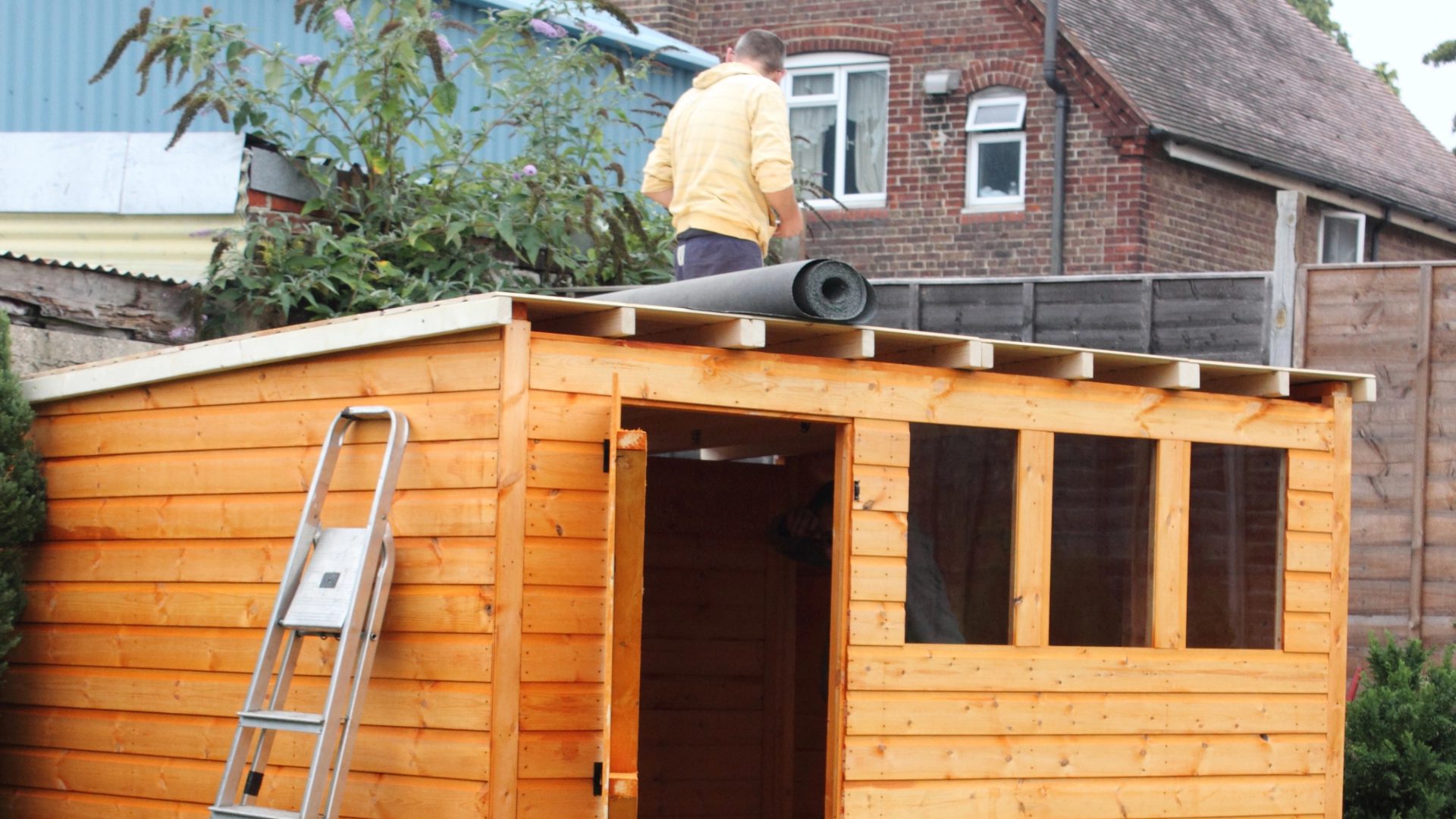
🔧 Roofing Materials: Because the Style Is Just Half the Battle
Once you’ve settled on a design, you’ll need to decide what to cover it with. Each roofing material has its own pros, cons, and aesthetic.
Asphalt Shingles: The Popular Choice
Traditional shingles are the most common roofing material for a reason:
- Affordability per square foot
- Availability in many colors
- DIY-friendly installation
- 20-30 year lifespan
- Can be upgraded to architectural shingles for a better appearance
If your home has traditional shingles, matching your shed roof creates a cohesive look for your property.
Metal Roofs: Long-Lasting Performers
Metal roofing has gained popularity for sheds due to its durability:
- 40+ year lifespan
- Excellent for rain and snow shedding
- Lightweight
- Available in panels or shingles
- Low maintenance requirements
From corrugated panels to standing seam to aluminum panels that look like traditional shingles, metal offers versatility and longevity.
Wood Shingles and Shakes: Timeless Appeal
For a natural look that ages beautifully:
- Cedar shingles offer natural resistance to insects and decay
- Wood shakes provide a more rustic, textured appearance
- Distinctive appearance that weathers to a silver-gray
- Good insulating properties
- 25-30 year lifespan with proper maintenance
- Higher initial cost but exceptional appearance
Wood shingles or wood shakes look particularly good on gambrel or saltbox roofs, enhancing their traditional character. The natural beauty of cedar shingles can transform a simple storage shed into a statement piece in your yard.
Roll Roofing: Budget-Friendly Simplicity
When cost is the primary concern, this type of roof may be your best bet:
- Inexpensive material sold in rolls
- Quick installation
- Good for single-slope or flat designs
- 5-10 year lifespan
- Limited color options
Roll roofing isn’t the prettiest option, but it gets the job done on a budget, particularly for utilitarian sheds.
Composite Shingles: The New Kids on the Block
Made from recycled materials and polymers, this type of roof has a ton of benefits:
- Eco-friendly option
- Can mimic slate or wood appearance
- Lightweight but durable
- 30-50 year lifespan
- Resistant to impacts and fire
- Minimal maintenance requirements
Though pricier than traditional shingles per square foot, composite shingles offer superior performance and often come with longer warranties. These are becoming an increasingly popular suitable roofing material for homeowners looking for durability combined with environmental consciousness.
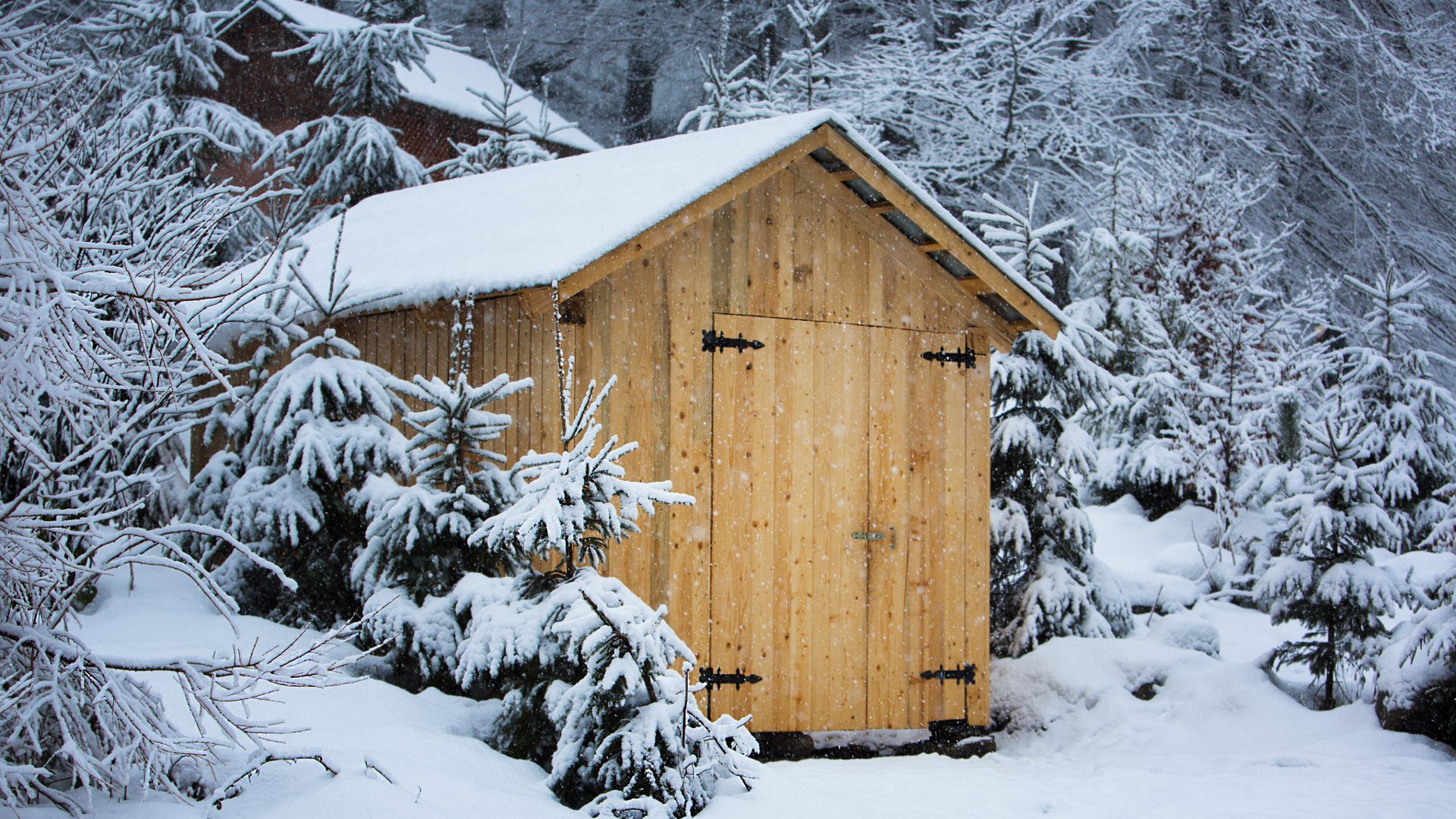
🌤️ Matching Your Shed Roof to Your Climate
Your local weather patterns should influence your choice of both design and roofing material.
For Snowy Regions
Winter weather presents unique challenges that require specific designs:
- Steeper pitches like gambrel or triangular roofs prevent snow buildup
- Metal roofing allows snow to slide off easily
- Reinforced framing may be necessary for heavy snow loads
- Avoid flat or low-pitch roofs unless designed for snow loads
- A steeper roof pitch helps prevent damaging accumulation
Remember, that cute flat-roofed shed design you found online might work great in Arizona but could collapse under Michigan’s winter snow (and you’re not gaining any extra space for storage!). Different designs perform very differently when facing extreme weather conditions, which is why roof pitch is such an important consideration for your existing roof or new build.
For High Wind Areas
In regions prone to strong winds and storms, these factors become crucial:
- Hip roofs offer the best wind resistance
- Triangular roofs should have extra bracing
- Metal roofing should include proper fastening systems
- Avoid gambrel roofs in hurricane-prone regions
The last thing you want is your shed roof becoming an impromptu Frisbee during the next big storm.
For Hot, Sunny Climates
In areas with intense sunshine and high temperatures, consider these adaptations:
- Light-colored roofing materials reflect heat
- Consider roofs that allow for ventilation
- Metal roofs with reflective coatings
- Space for solar panels if desired
- Aluminum panels provide excellent heat reflection
In places where the sun feels like it’s trying to melt your outdoor furniture, your choice can make the difference between usable storage and a backyard sauna. The right type of roof with proper ventilation and natural light considerations can transform how functional your shed remains throughout the hot seasons.
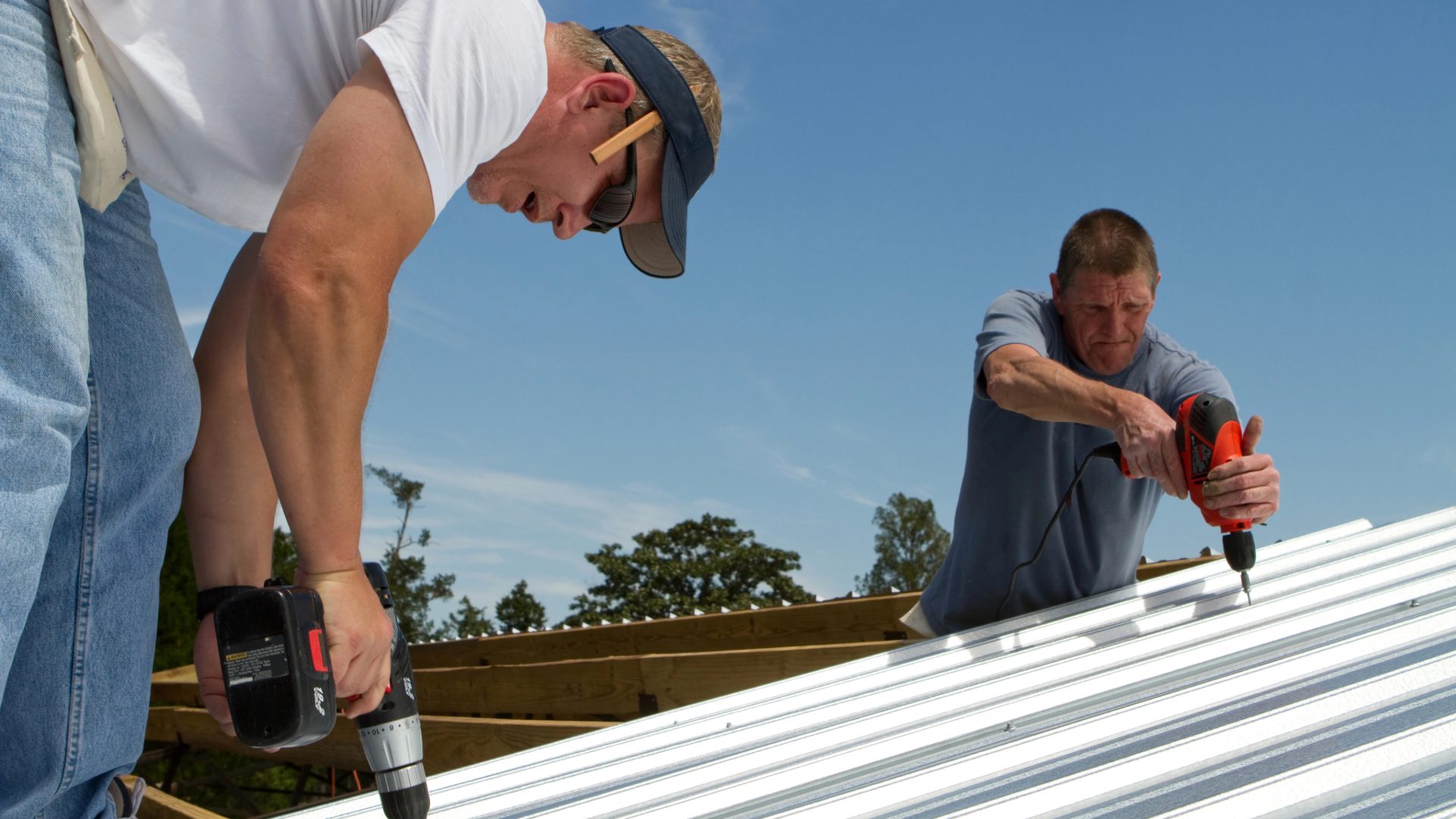
🔨 DIY or Hire a Pro? Be Honest With Yourself
Building a shed roof isn’t rocket science, but it’s not exactly assembling a bookshelf either.
DIY-Friendly Options
If you’re planning to build the shed yourself, these designs offer varying levels of complexity:
- Single-slope designs are the simplest
- Lean-to roofs require minimal cutting
- Triangular roofs are straightforward but require more cuts
- Flat roofs are easy to frame but need careful waterproofing
For DIY builders, starting with a more straightforward design allows you to develop your skills while still creating a functional structure. Just remember to invest in quality tools, take accurate measurements, and don’t rush the process; patience is often the difference between a weekend project and a multi-weekend adventure.
Leave-It-to-the-Pros Options
Some designs are challenging even for experienced DIYers and might warrant professional help:
- Hip roofs have complex angles and cuts
- Gambrel roofs require precise framing
- Saltbox roofs have asymmetrical challenges
- Any roof on a larger shed (over 10′ x 12′)
Be realistic about your skills, tools, and time. Sometimes paying a professional saves money in the long run when you factor in mistakes and do-overs.
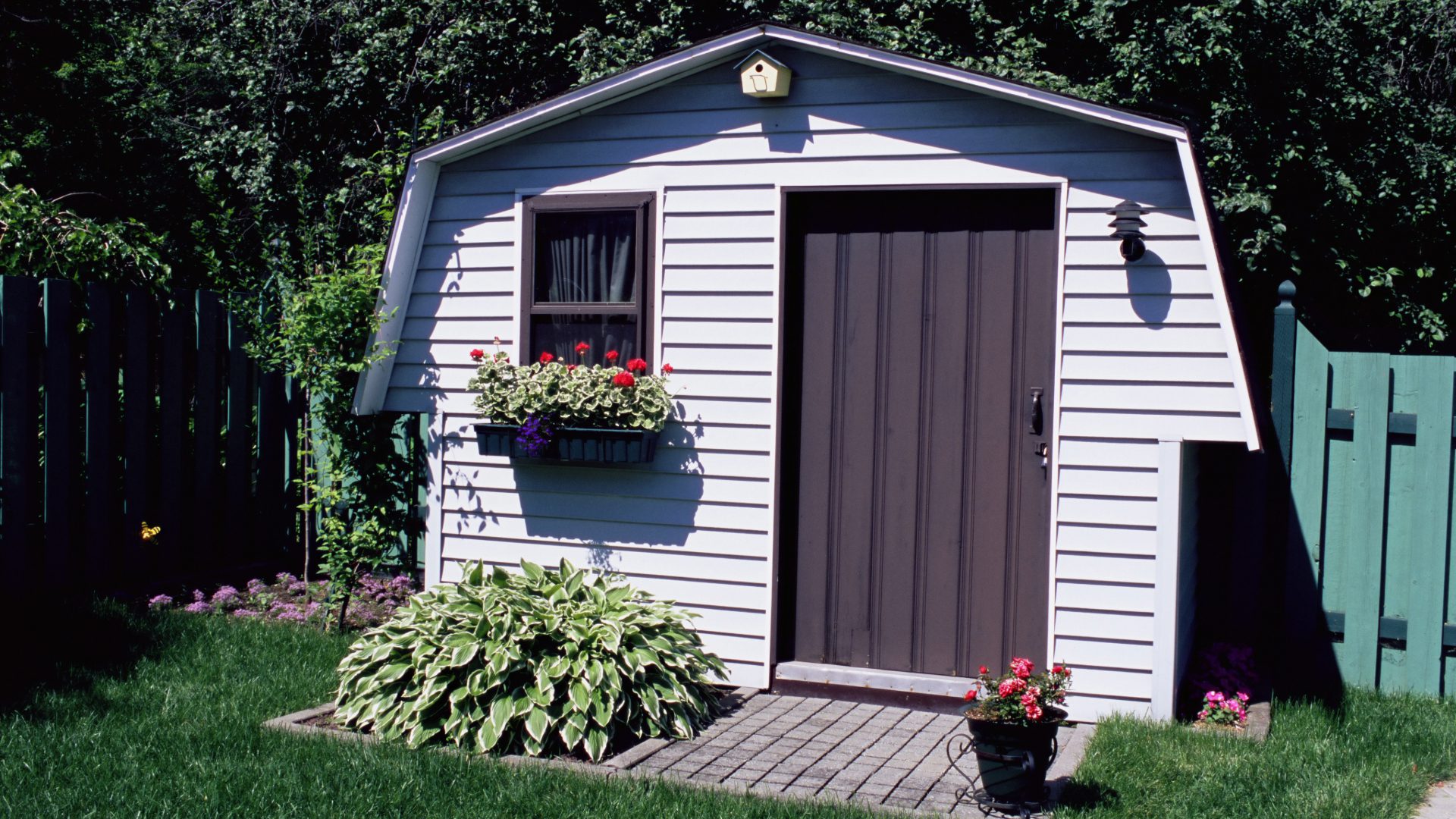
✨ The Right Design Makes All the Difference
Your shed isn’t just a box in the backyard – it’s an investment in your home and lifestyle. The right design balances appearance, function, climate considerations, and budget. Choosing the best roof for your shed depends on whether you need additional storage space, architectural appeal, or simply the most economical solution.
Whether you choose the classic appeal of a triangular design, the space-creating potential of a gambrel with its sloping sides, or the modern simplicity of a skillion roof, your shed will serve you better when its roof is thoughtfully selected. Different designs offer varying levels of complexity, but all can provide excellent protection and value when properly constructed.
And remember: the perfect design is the one that meets your specific needs, complements your home, and stands up to your local climate, not just the one that looked cool on Pinterest. Finding the perfect balance between form, function, and budget is key to satisfaction.
Ready to start your project? Get your materials list together, check local building codes (yes, many areas require permits even for sheds), and prepare to add valuable storage space to your property with a shed that’s built to last with proper maintenance and quality materials.
Need Help?
Need professional help with your shed or other home improvement projects? Leach Construction has been serving Metro Detroit families since 1965 with quality craftsmanship and dedication to customer satisfaction. Contact us for a free consultation on your next project!

